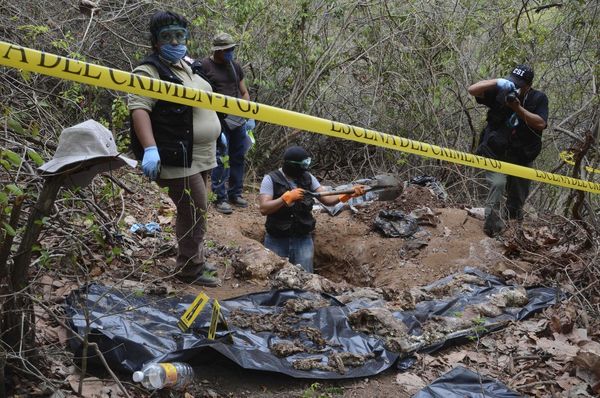
Ukraine’s armed forces tore into southwestern Russia in a surprise attack during the past week, claiming almost as much territory as Russian forces have taken in Ukraine since the beginning of the year.
Oleksandr Syrskii, Ukraine’s commander-in-chief, claimed Kyiv’s forces controlled about 1,000sq km (386sq miles) in Russia’s Kursk region on Monday, six days into the offensive.
The Institute for the Study of War, a Washington-based think tank, estimated Ukraine’s advances at about 800sq km (309sq miles) based on satellite imagery and open source information. It assessed that Russian forces had occupied 1,175sq km (454sq miles) of Ukrainian territory since January.
The Ukrainian incursion, undertaken with scant resources while the country defends itself against the Russian full-scale invasion, also compares favourably with Russia’s attempt to open a new front in Kharkiv last May, which advanced 6-10km (4-6 miles) before being stopped.
Russia’s Federal Security Service (FSB) and border guards in Kursk were clearly caught unprepared.
On August 7, 24 hours into the offensive, geolocated video showed Ukrainian armoured vehicles about 10km (6 miles) from the border. Finnish military analyst Emil Kastehelmi assessed they had penetrated at least two Russian defensive lines.
Russian authorities were also caught off-guard.
Anti-Kremlin Russian militias have launched border skirmishes from Ukraine at least twice during the war, but the Ukrainian military has avoided provoking Russia with a ground invasion until now.
The Russian Ministry of Defence initially announced this was another raid by Russian irregulars, and then stepped back from the claim, removing an official post on social media.
Russian President Vladimir Putin called the incursion a “large-scale provocation”, not an invasion.
It was not until Friday, three days into the battle, that Russia’s Defence Ministry announced it had sent additional rocket systems and tracked vehicles to help defend Kursk. And it wasn’t until Saturday that Ukrainian President Volodymyr Zelenskyy acknowledged that Ukrainian troops were responsible.
In an evening address, he said, “Russia has brought war to others, now it’s coming home. Ukraine has always wanted only peace, and we will definitely ensure peace.”
“Chief of Staff Syrskii has already reported several times – regarding the front and our actions and pushing the war into the territory of the aggressor,” Zelenskyy said in an evening address. “Ukraine proves that it really knows how to restore justice and guarantees exactly the kind of pressure that is needed – pressure on the aggressor.”
Even then, Russian authorities chose to downplay the threat, with FSB head Alexander Bortnikov saying “sabotage and reconnaissance units” were conducting “terrorist acts” in Russia.
By Tuesday, Zelenskyy said, Ukrainian forces “control” 74 localities in Kursk, presumably meaning towns and settlements. Geolocated footage has placed them up to 24km (15 miles) inside Russia, along a 40km (25-mile) wide front. Some Russian military reporters have put them as much as 35km (22 miles) inside Russia.
How did Ukrainian troops manage it, and what is Kyiv’s motive?
Few details of Ukrainian tactics have emerged, but Russian reporters have spoken of small Ukrainian armoured units using “raid tactics” well behind Russian fortifications, then withdrawing and leaving larger forces to consolidate gains.
Analysts also compiled maps showing parts of Ukrainian units as opposed to entire units being moved from the front-lines in east Ukraine to Sumy in preparation for the offensive, so as not to put large groupings on display.
Zelenskyy said Russia had shelled the Sumy region from Kursk 2,100 times since June. “This was a purely security issue for us,” he said.
Sumy’s military administrator, Volodymyr Artyukh, on Sunday said Russia had introduced a new threat.
“Previously, these were simple antitank missiles that [attacked] populated areas. Now there are new gliding munitions, but with an engine,” Artyukh told a telethon. He said Russia was dropping 40-50 of these glide bombs bombs a day.
If Ukraine hoped to distract Russian combat-ready units from the difficult eastern front, the gambit didn’t seem to have worked, at least not yet.
Fighting remained fierce in the Luhansk, Donetsk and Kharkiv regions, with Russian and Ukrainian units both making gains. Ukrainian retired Colonel Konstantin Mashovets, who monitors the war closely, said Russia had only redeployed the equivalent of 10-11 battalions to deal with the threat in Kursk.
Matthew Savill, military sciences director at the Royal United Services Institute (RUSI), suggested the motive might have been to “strike a blow against Russian prestige and morale” while “boosting Ukrainian morale after months on the defensive”.
Evacuating 200,000 Russian civilians from border regions is likely to have caused Moscow embarrassment.
More practically, he said, Ukraine might aim at gathering prisoners to exchange or to threaten Russian supply lines feeding the Russian incursion into Kharkiv, further east, a goal Mashovets agreed was key.
Does Ukraine intend to hold this ground?
“While the Ukrainians have reversed the public narrative about being on the defensive,” Savill said, “it seems unlikely they would want to sustain a large incursion for months; they will have a decision to make about the best time to trade in the ground they have captured, and to what end.”
Trading Russian territory might be an aim, White House national security spokesman John Kirby seemed to suggest, when he told reporters on Monday, “This is Putin’s war against Russia. And if he doesn’t like it, if it’s making him a little uncomfortable, then there’s an easy solution: He can just get the hell out of Ukraine and call it a day.”
The fact that Ukraine was using US hardware to invade Russia did not disturb US officials.
White House spokeswoman Karine Jean-Pierre said Ukrainians were “defending themselves against Russia’s aggression … and they are going to take actions – right? – common sense actions to – certainly to protect themselves.”
Ukraine’s invasion of Russia came almost exactly six months into Syrskii’s tenure as commander-in-chief.
An official bulletin on Ukraine’s defence summarised Syrskii’s first six months on the job in an analysis of his speeches and statements during that time.
It said the main achievements were that Ukraine’s armed forces had managed to stop the Kharkiv offensive and slow down Russia’s advance westwards from Avdiivka, which fell in February.
“While in three weeks of February the enemy managed to advance approximately 15 kilometres [9 miles] in the Avdiivka direction, in the next four months – only a little more than 10 kilometres [6 miles],” the bulletin said.
Settling old scores
In addition to holding the front line at home from any Russian breakthrough, Ukrainian forces showed they could still unsettle the Russian occupation.
Ukraine said its military intelligence forces successfully led a predawn landing on the Kinburn Spit, a sandbar in the occupied Kherson region which lies a mere 4km (2.5 miles) offshore the free Ukrainian port of Ochakiv in the northern Black Sea. Ukraine said its forces destroyed six vehicles and killed or disabled about three dozen troops, and posted video.
Three days earlier, Ukrainian military intelligence said it had led naval units in a landing on the Tendrivska Spit, 20km (12 miles) to the south, and carried out a similar raid.
The raids carried a psychological importance, because Russia had fought off a 120-strong detachment of Ukrainian special forces who tried to land on the Kinburn Spit in September 2022, and acted as a reminder of the dynamic and unstable nature of Russian conquests.
That dynamic went the other way in nearby islands of the Dnipro Delta this month, some of which Ukraine had recaptured in April last year, and which Russia’s Defence Ministry said it repossessed on August 4.
Russia also re-established control over the village of Krynky on the left bank in July, from where a Ukrainian bridgehead had for months conducted counter-battery fire to render Russian artillery ineffective.
Ukraine has followed a policy of deep strikes against Russian military and industrial infrastructure this year, and that continued unabated in the past week.
Ukraine’s general staff said its forces had struck ammunition warehouses containing glide bombs at the Lipetsk airfield in Russia, noting that “multiple detonations were observed”.
Lipetsk lies 230km (143 miles) northeast of Kharkiv city, and Ukraine’s repeated strikes on the airfield may have begun to render it ineffective. On August 7, Ukraine’s general staff said “the enemy did not use tactical aviation in the Kharkiv direction” for the first time in a long time.







